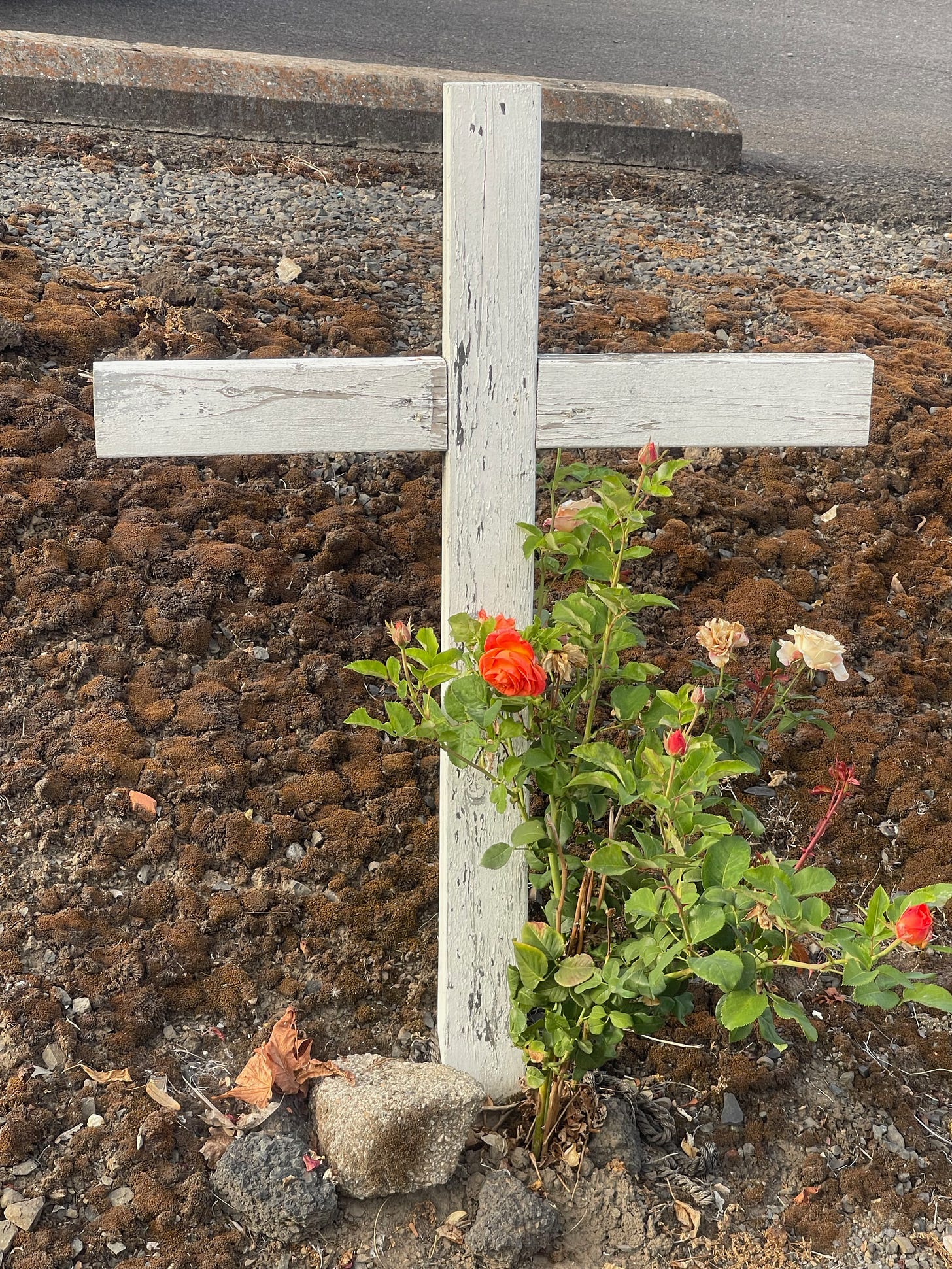In Memory Of…
by Andrew Meblin
You see them while driving, or biking, or walking. Usually the central object is a cross, decorated in a wide variety of ways. Sometimes there are names and words, often flowers (mostly plastic), or maybe artificial garland. Once I saw one with a pinwheel.
You have probably guessed that I am writing about roadside memorials that seem to have increased in prevalence over the last thirty years. It could be just be that I am noticing them more though. Sort of like when you are in the market for a certain model car and you start seeing them all over the place? Could be that.
Sometimes it is just a simple cross, and a plant, as seen here near Bunn Village in Oregon
Thinking back to my first encounter, it was on a highway in Sinaloa, Mexico, where I noticed a miniature altar constructed with cement blocks, and some of the above-mentioned accouterments. It was in the bright sun of a late winter day. The photographer with whom I worked on that job was driving our rented Cutlass (pronounced Coot-lis by the rental agency woman). We came upon three dogs in the middle of the roadway adjacent to a small cluster of homes. One dog was lying on the centerline and the other two were nosing around, as though trying to wake up their friend. I made Chris stop, and I dragged the dead animal way off the road so the remaining two would have a lesser chance of joining their buddy that day.
Before we left I looked across the two-lane blacktop and noticed the small altar. It was pre-iPhone so the only camera we had was a cumbersome video camcorder. I captured no images, but wish I had. The one that got away.
I began to notice these collections of objects in the US. The presence of these clusters of physical things intrigued me. I googled it.
According to In The Light Urns, a seller of urns for cremains, and cremation jewelry, the practice once mostly limited to states in the southwest, has now spread to other states. The practice began in Mexico, and dates back to a time before the availability of automobiles.
When a traveller died without the benefit of last rites, the bereaved feared the soul of the deceased was in purgatory. A cross would be placed there for others to pray for the dead. An alternate explanation is the practice began when coffins were carried from a church to the cemetery, and at each resting point, descanso in Spanish, a member of the funeral procession would mark the spot with a stick or twig pushed into the ground. The custom has spread to most countries where Christian religions are prevalent.
In Ohio the Department of Transportation discourages the practice. Indeed, the roadside memorial is illegal in many states. California prohibits them. Oregon allows them. Dr. Art Jipson of University of Dayton compiled this list.* And so with slightly more than a handful of roadside memorials near me, I captured the following images.

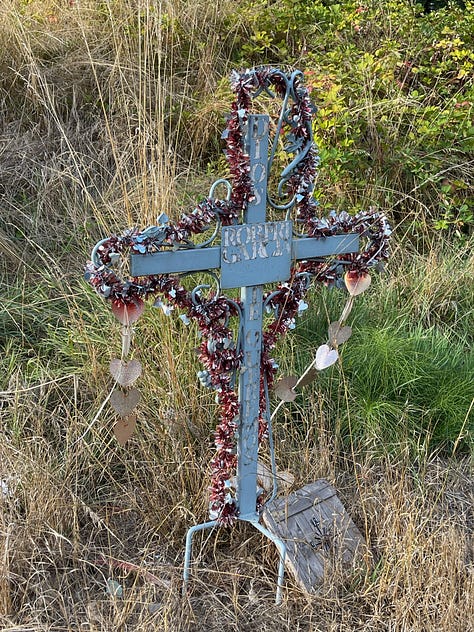
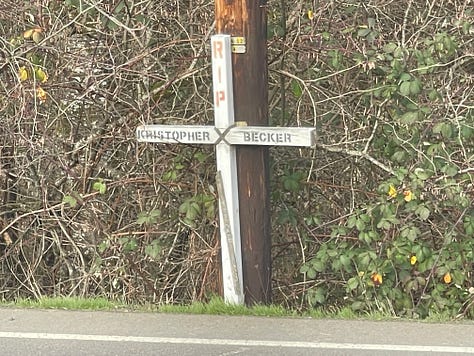
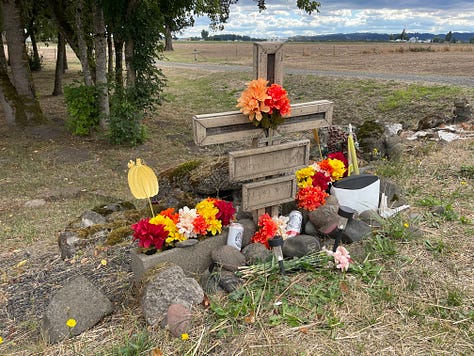
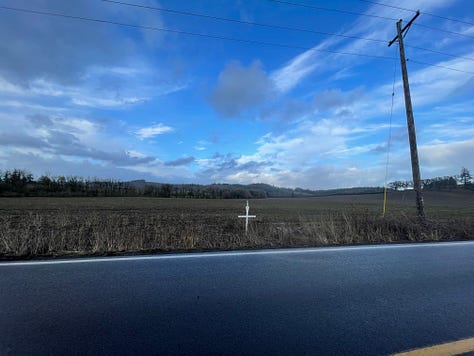
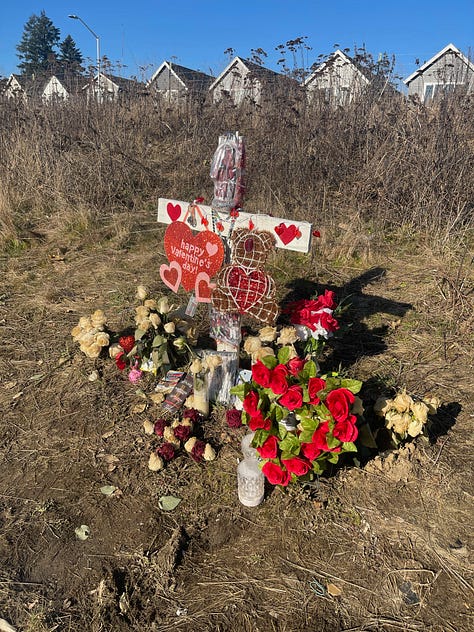

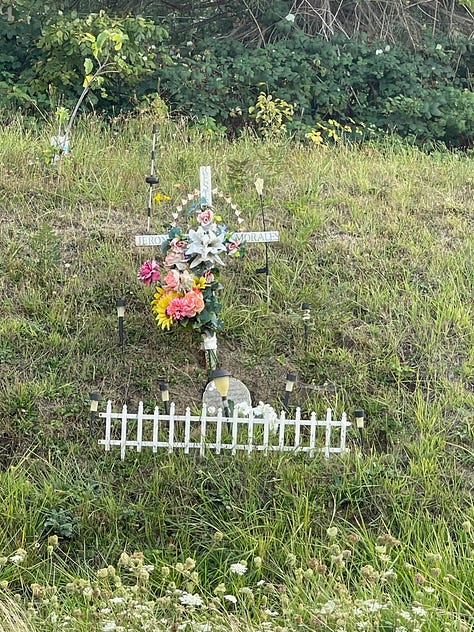
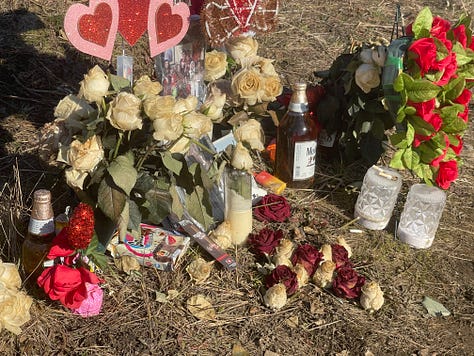
For a rousing return to positivity, please watch the uplifting performance by Lauren Daigle from the Super Bowl.
And of course, this image.
*As always laws change, and this information is in no way to be considered legal advice




